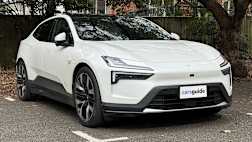Used-vehicle prices continued to break records in Australia in the first quarter of 2021, according to financial intelligence company Moody’s Analytics.
While Q1 2021 growth was five per cent, it was actually the lowest increase in the past four quarters. That said, it was still the largest quarterly rise in the previous decade.
All in all, used-vehicles prices in Q1 2021 were 37 per cent higher than the pre-pandemic high set in February 2020, so their growth has been unprecedented.
The main reason for this recent spike is the global shortage of semiconductor chips, which are an increasingly important part of modern vehicles.
The production bottleneck came to fore in late 2020, when new-vehicle sales began to rebound from the pandemic more quickly than expected, catching suppliers off guard.
Of course, Australian new-vehicle supplies were already tight then due to the related recession, so the issue was further exacerbated at time and continues to be so.
“Prices are not expected to revert to pre-pandemic levels, as they will remain elevated throughout the second quarter while supply pressures and steady demand keep the market hot,” Moody’s Analytics auto economist Michael Brisson said.
“There is expected to be some pullback in prices in the third quarter, but price levels are projected to remain rather flat once the corner is turned.”
He added: “Prices of durable goods do not usually crash back like commodities. It takes time and energy for dealerships to go out and change the prices on vehicles. However, the market is overvalued and will take time to recalibrate.
“The most likely scenario for this recalibration is through an extended period of limited price growth over the medium term. What this means for individual vehicles is a return to a more normal rate of depreciation.”





.jpg)

.jpg)
.jpg)

.jpg)


.jpg)

_0.jpg)





.jpg)
.jpg)
.jpg)
.jpg)
 (1).jpg)


.jpg)
